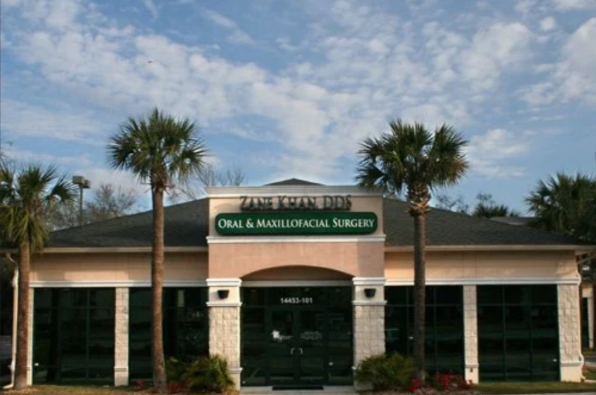Allograft is human tissue, taken from a deceased donor and transplanted into another person. Most commonly used in orthopedic reconstructive surgery, allografts have been helping to enhance patients’ lives for many years – more than two million people in the past five years alone.
At Dr. Zane Khan’s office, we obtain our bone graft material from LifeNet Health. They provides allografts to physicians and hospitals. They are the nation’s largest full-service, nonprofit tissue banking system, LifeNet Health is registered to the ISO quality standard, holds the longest running current accreditation by the American Association of Tissue Banks (AATB), and is registered with the Food and Drug Administration (FDA).
Why Choose an Allograft?
Allografts, or donor tissue, are frequently preferred over autografts, a person’s own tissue, for a variety of reasons. Allografts (human tissue) can help patients restore form, function and enjoy a better quality of life.
Generally, since no second surgical site is required (as there is when an autograft is utilized), healing time may be shorter and less painful. In addition, autografts are only available in limited amounts, from limited areas of the body. Allografts are more readily available.
How Does LifeNet Health Screen Allograft Donors?
Before a donation, specially trained professionals perform rigorous medical and behavioral risk screenings to ensure the eligibility of the potential donor, as per Food and Drug Administration (FDA) guidelines.
How is Donated Tissue Recovered?
All donor tissue is recovered in the United States in appropriate settings under strict aseptic conditions by dedicated and trained recovery personnel.
What About Testing?
To ensure that the donated tissue poses the lowest possible health risk, a blood sample from the donor is tested for the following:
- Blood tests for HIV, Hepatitis, and Syphilis
- Procedures to ensure the absence of bacteria and fungi
LifeNet Health meets and exceeds industry standards of disease testing. All testing is performed in government-certified (or equivalent) laboratories.
How Does LifeNet Health Process Tissue?
The quality control measures continue with LifeNet Health’s patented allograft tissue processing. LifeNet Health’s processing steps make the risk of disease transmission extremely remote. Musculoskeletal (bone and tendon) tissue is prepared in special controlled (cleanroom) processing suites and undergoes LifeNet Health’s Allowash XG cleansing process. With Allowash XG Technology, chemical (virucidal and bactericidal) agents penetrate allograft tissue and help to significantly reduce the potential transmission of disease. Compared to some other processing methods for musculoskeletal tissue, Allowash XG results in dramatically cleaner allograft tissue. Also, the tissue is carefully cryopreserved (frozen at a controlled rate) in an effort to preserve the original structural and biological integrity of the graft.
When is Tissue Ready for Transplantation?
Tissue is released for distribution only after all final quality assurance checks have been met. LifeNet Health’s Quality Assurance laboratory performs all required aerobic and anaerobic cultures and any applicable additional testing. Finally, all donor records are reviewed by LifeNet Health’s Medical Director to determine eligibility for transplantation. Since the introduction of Allowash in 1995, there has been no incident of disease transmission directly linked to tissue screened and processed by LifeNet Health. LifeNet Health standards are not indicative of those employed by other tissue banks and it should not be assumed that all banks are comparable. Since its establishment in 1982, LifeNet Health has developed a stringent quality control process. By setting exceptionally high standards, LifeNet Health provides leadership in the field of tissue recovery and processing.
For more information please see the following link
